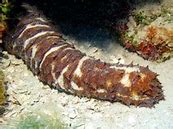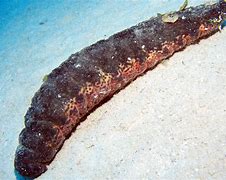Sea Cucumber



Sea cucumbers are marine invertebrates belonging to the class Holothuroidea. They are known for their elongated, cucumber-like body shape and their important ecological roles in marine ecosystems. Here are some interesting facts about sea cucumbers:
Appearance: Sea cucumbers have a soft, elongated body with a cylindrical or cucumber-like shape. They lack a rigid internal skeleton and have a flexible body wall. Some species have distinct tube-like feet called tube feet, which they use for locomotion.
Diversity: There are over 1,250 known species of sea cucumbers, and they come in a variety of colors, shapes, and sizes. Some species have a smooth and leathery body, while others may have spines, bumps, or tentacles.
Habitat and Distribution: Sea cucumbers are found in all oceans, from shallow coastal areas to the deep sea. They are particularly abundant in tropical and subtropical regions, but they can also be found in colder waters. They inhabit a wide range of marine habitats, including coral reefs, rocky reefs, seagrass beds, and sandy or muddy seabeds.
Feeding Habits: Most sea cucumbers are detritivores or deposit feeders, meaning they feed on organic particles and sediments found in the substrate. They use specialized tentacles called oral tentacles to sweep the seafloor or substrate, gathering and consuming organic matter, plankton, and microorganisms.
Defense Mechanisms: Sea cucumbers have various defense mechanisms to protect themselves from predators. Some species can expel parts of their internal organs, such as their viscera or sticky threads, to entangle or distract predators. Others have toxic or distasteful chemicals in their body wall or release sticky substances to deter predators.
Respiratory and Excretory System: Sea cucumbers have a unique respiratory system. They possess respiratory trees, which are branching tubes connected to their anus. These structures facilitate gas exchange, allowing sea cucumbers to extract oxygen from the surrounding water. Waste products are also excreted through the anus.
Regenerative Abilities: Sea cucumbers have impressive regenerative capabilities. If injured or threatened, they can regenerate lost body parts, including their internal organs and even their entire body. This ability is advantageous in their often harsh and predator-rich environments.
Economic Importance: Sea cucumbers have been harvested for centuries for various purposes. In some cultures, they are considered a delicacy and are used in traditional cuisine. Additionally, certain compounds found in sea cucumbers have attracted interest in pharmaceutical research due to their potential medicinal properties.
Environmental Role: Sea cucumbers play important ecological roles in marine ecosystems. They help to recycle and break down organic matter, contributing to nutrient cycling. Their burrowing and feeding activities also help to aerate and churn sediments, promoting the health of the seabed.
Threats and Conservation: Some species of sea cucumbers are facing threats due to overharvesting, habitat destruction, and pollution. The demand for sea cucumbers in international markets has led to unsustainable fishing practices in some regions. Conservation efforts are underway to protect and manage these important organisms and their habitats.